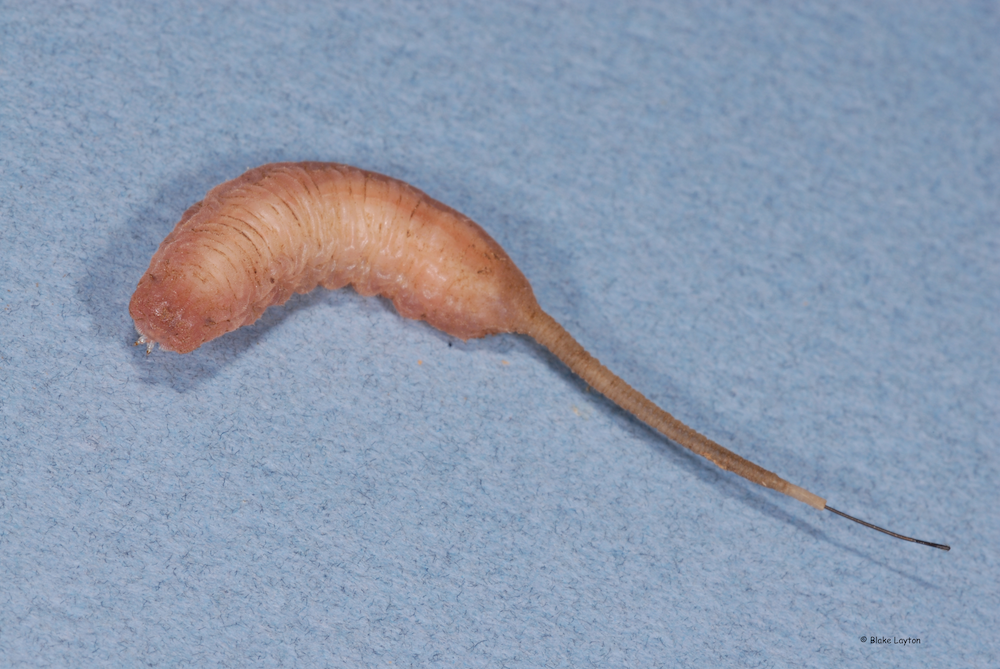Rat-tailed Maggot, Vol. 7, No. 2
Related News
April 11, 2013
April 2, 2013
March 14, 2013
February 28, 2013

In the ice-fishing world rat-tailed maggots are better known as mousies, a favorite bait for perch and other panfish. That wiggling “tail” makes them irresistible to cold finicky fish that may ignore other baits. Some anglers use two or three mousies on a single hook for extra attraction. The body of a mature larva is about ¾ inches long, but the “tail” can be several times the length of the body.
Though located at the rear of the body, the “tail” is more like a nose, because the larvae breath through this structure, which is more properly called the siphon. Rat-tailed maggots live in shallow aquatic habitats with high organic matter content, places like sewage lagoons, stagnant pools, drainage ditches, and similar waters with high concentrations of animal feces, decaying vegetation, or other decaying material. The maggots live in shallow water near the edge of such habitats, where they can stick their siphon up to the surface to breath while remaining below the surface to feed on bacteria and organic material. Once they are fully grown, the maggots crawl out of the water to pupate in nearby soil or other dry, protected locations.
Adults are called drone flies because they resemble honeybees in size, color, and markings. Because of their large eyes, they really do look more like drone bees than worker bees. Of course, drones are males and have no sting, but birds and other predators don’t seem to make this fine distinction, and this mimicry of a stinging insect helps protect these stingless flies from predators as they visit flowers to feed on nectar. Drone flies belong to a large group of flies known as flower flies or hover flies. Flower flies because they so often frequent flowers and hover flies because of their ability to hover in mid-air.
Female flower flies also feed on pollen and serve as pollinators by inadvertently carrying grains of pollen, which stick to their bodies, from flower to flower. Take time to notice the insects that are visiting the flowers in your yard this year and you will see several different species of flower flies hovering about. Most will be yellow or orange and black or brown and resemble small bees and wasps. If you see a drone fly, consider the striking contrast between the habitats where adult flies come to feed and the habitats where the larvae feed. And if you find yourself near the edge of some nasty, shallow water, that’s the place to look for rat-tailed maggots, should you care to do so. Maybe you can catch enough to go fishing.
Blake Layton, Extension Entomology Specialist, Mississippi State University Extension Service.
The information given here is for educational purposes only. Always read and follow current label directions. Specific commercial products are mentioned as examples only and reference to specific products or trade names is made with the understanding that no discrimination is intended to other products that may also be suitable and appropriately labeled.
Mississippi State University is an equal opportunity institution.
Bug’s Eye View is now on Facebook. Join the Bug's Eye View Facebook group here.